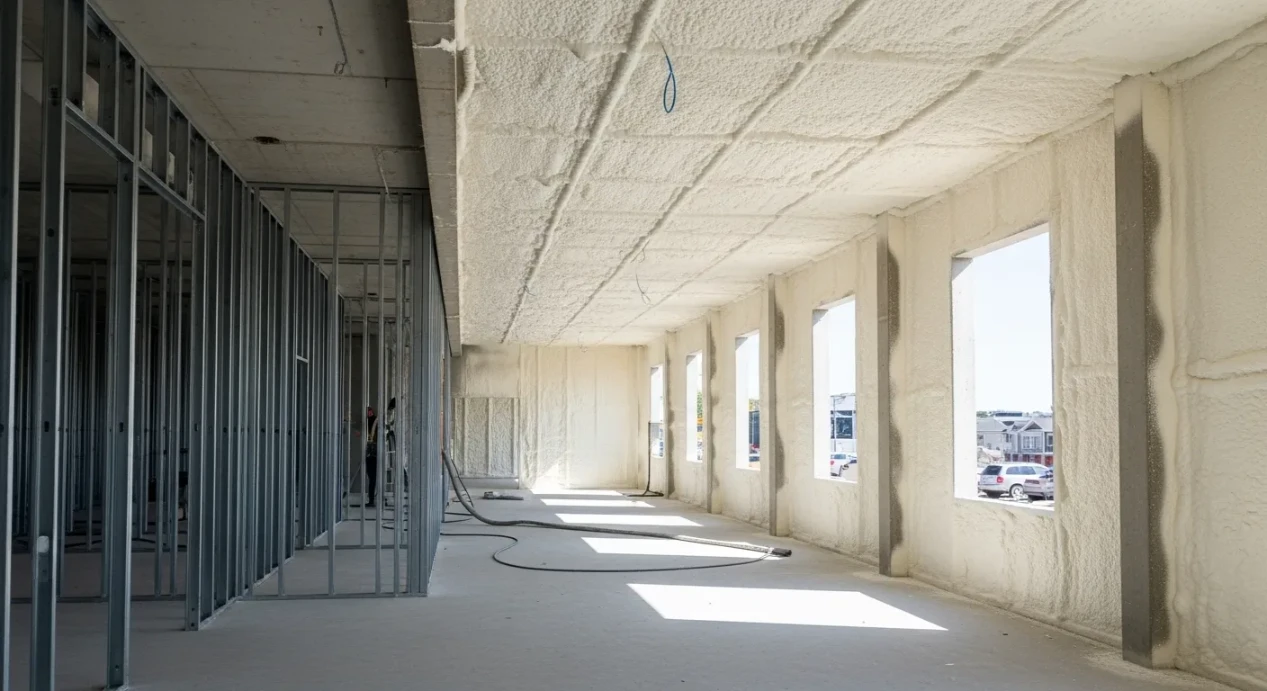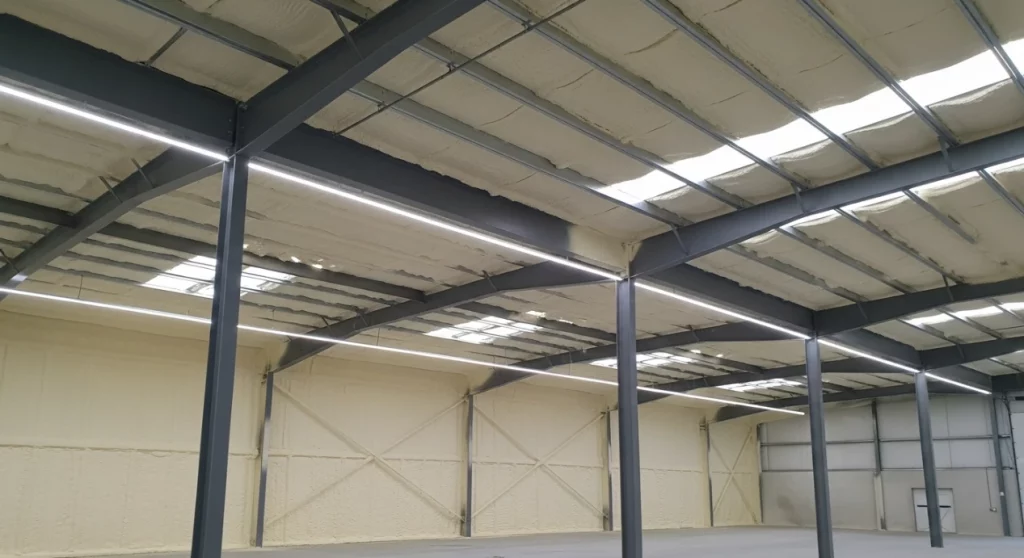
Proper insulation provides a critical defense against the distinct and often challenging weather patterns of St. Louis. For a local home, this means staying cooler during hot, humid summers and warmer through cold, damp winters. An effectively insulated structure significantly reduces the strain on heating and cooling systems, leading to lower energy consumption and more stable, comfortable indoor temperatures year-round. This guide breaks down the specific ways insulation counteracts the region’s weather, from summer heatwaves to winter freezes.
The primary challenge for St. Louis homes in the summer is managing intense heat and high humidity. Insulation works by slowing down heat transfer, which is the movement of thermal energy from a warmer area to a cooler one. During a hot day, an uninsulated or under-insulated attic can reach extreme temperatures, radiating that heat down into your living spaces.
Proper insulation in the attic and walls acts as a barrier, keeping the sun’s heat out of the home. This directly reduces the amount of time your air conditioner needs to run to maintain a comfortable temperature. According to an ENERGY STAR analysis, homeowners can save an average of 15% on heating and cooling costs by air sealing their homes and adding insulation in attics, floors over crawl spaces, and accessible basement rim joists.
Beyond temperature, insulation also helps manage humidity. When humid outdoor air infiltrates a home, it makes the indoor environment feel warmer and stickier. Certain insulation materials, when installed correctly with air sealing techniques, limit this air exchange. This helps your HVAC system control indoor humidity more effectively, improving overall comfort.
In winter, the role of insulation reverses. Instead of keeping heat out, its job is to keep the heat generated by your furnace inside. Heat naturally moves toward colder areas, meaning it will escape through ceilings, walls, and floors if there isn’t an adequate thermal barrier.
This is where the R-value of insulation becomes important. R-value measures a material’s resistance to heat flow. The higher the R-value, the better the insulation’s performance. For our region, which falls into a mixed-humid climate zone, specific R-values are recommended for optimal performance. An analysis by the U.S. Department of Energy suggests that attics in this climate zone should be insulated to R-38 to R-60 to be effective.
A well-insulated home not only retains heat better but also eliminates cold spots and drafts. This creates a more uniform temperature from room to room, getting rid of those chilly corners and improving the overall sense of comfort during the coldest months.
Proper attic insulation and ventilation are your best defense against ice dams. By keeping the attic space cool and close to the outdoor temperature, insulation prevents snow on the roof from melting and refreezing at the eaves. This protects your roof, gutters, and siding from water damage.
St. Louis is known for its unpredictable shoulder seasons, where temperatures can swing dramatically in a single day. Proper insulation acts as a thermal buffer, stabilizing indoor temperatures against these external fluctuations. This means your HVAC system isn’t constantly kicking on and off to keep up, saving energy and reducing wear and tear on the equipment.
Another often-overlooked benefit is sound reduction. Some insulation materials, like dense-pack cellulose and certain types of mineral wool, are excellent at absorbing sound. This can make a noticeable difference in reducing noise from heavy rain, hail, and strong winds that are common during spring thunderstorms.
To achieve these benefits, it’s crucial to select the right material.

Different insulation materials have varying characteristics. The right choice depends on the application, budget, and specific performance goals for a St. Louis home.
| Insulation Type | Typical R-Value (per inch) | Moisture Resistance | Air Sealing Ability |
|---|---|---|---|
| Fiberglass Batts | 3.1 – 4.3 | Moderate | Low (requires separate air sealing) |
| Blown-In Cellulose | 3.2 – 3.8 | Good | Good (fills gaps well) |
| Open-Cell Spray Foam | 3.5 – 3.8 | Low | Excellent |
| Closed-Cell Spray Foam | 6.0 – 7.0 | Excellent | Excellent |
Before adding new insulation, it’s important to evaluate a few key factors to ensure you get the best results.
Proper insulation is a fundamental part of making a St. Louis home energy-efficient and comfortable through every season. It directly counteracts the summer heat, winter cold, and the temperature swings of spring and fall. Before making any changes, it’s best to assess your home’s current situation, including existing insulation levels, air leakage points, and ventilation. This evaluation helps determine the most effective strategy for your specific needs and long-term goals.
Understanding your home’s specific insulation needs is the first step toward better comfort and lower energy bills. To get a clear picture of where your home is losing energy, consider a professional evaluation. The information presented here is based on extensive field experience in addressing the unique insulation needs of homes throughout the St. Louis metropolitan area. For a detailed consultation, connect with the team at Armored Insulation. You can reach an expert directly by calling (270) 331-4844 or by sending an inquiry to [email protected]. A proper assessment ensures you invest in solutions that deliver real results for your St. Louis home.
Yes, by reducing air infiltration. When insulation is paired with professional air sealing, it limits the amount of unconditioned air entering the home. This means fewer airborne allergens like pollen, dust, and other pollutants get inside.
A lighter-colored roof can reflect more sunlight and reduce the heat load on your attic, as noted in research from the Lawrence Berkeley National Laboratory. While it helps, it doesn’t replace the need for proper attic insulation. Think of it as a helpful supplement, not a substitute.
For most homes in St. Louis, insulating the attic floor is the most common and cost-effective approach. This keeps the heat in the living space below during winter and out of it during summer. Insulating the roof deck is a different strategy often used for conditioned attics or homes with HVAC equipment in the attic space.
For the St. Louis area (Climate Zone 4), the U.S. Department of Energy recommends R-38 to R-60 for an attic. This usually translates to about 12 to 18 inches of blown-in fiberglass or cellulose insulation.
Insulation helps keep surfaces warm, which can prevent condensation. More importantly, when combined with air sealing, it stops the movement of moist, outside air into the home’s conditioned envelope, which is a primary driver of high indoor humidity in the summer.
Not by itself. Insulation slows heat transfer, but drafts are caused by air leaks. While some insulation types like spray foam do air seal, most drafts must be addressed by sealing cracks and gaps in your home’s exterior shell before or during the insulation process.
Materials like fiberglass, cellulose, and spray foam are designed to last for the life of the home. Their performance won’t degrade over time unless they are physically disturbed, compressed, or exposed to moisture.